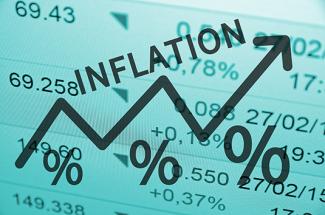
The forces behind our current COVID-induced inflation
Recent inflation numbers have been quite high and at levels not seen for 40 years.
As financial planners, inflation is important element of our financial plan assumptions. Some analysts lay the blame for current elevated inflation on supply chain and labor force disruptions caused by COVID. We think the COVID-induced impact on inflation, or at least a portion of it, will prove transitory as the supply chain normalizes. The labor component of inflation may have a stickier effect and contribute to a higher base level of inflation than was experienced in 2010-2020 decade.
But there are other factors that pundits claim will have a more lasting impact on inflation. One of these factors is the extremely easy monetary policies adopted by the Federal Reserve over the past several years to offset the negative economic impact of COVID. The Fed’s easy money policies plus COVID-related fiscal support programs have pumped massive amounts of money into the U.S. financial system which some economists claim will stoke significant future inflation. Will this in fact occur? Is inflation purely a monetary phenomenon?
I believe inflation, and forecasting it, is a conundrum for the economists and academics. There are academic theories about inflation that in retrospect did not always work the way the textbooks said it would. The Fed’s inflation forecasts have been wrong for decades.
Based on my 40 years of experience in this industry, I don’t think sustained high inflation is purely a monetary phenomenon. I believe there are a lot of other factors that go in to generating sustained 1970s-style inflation including things like capital investment, productivity, input costs, labor supply, aggregate consumption, and very importantly, inflationary psychology (i.e. “everything is going up in price so it can only continue to go up”).
No question there is a lot of money out in the financial system now due to the monetary and fiscal policies of the past few years, but I don’t think anyone can truly predict whether it will turn into sustained high inflation. And there are still offsetting forces such as aging global demographics, technology, and gargantuan sovereign debt levels that all tend to be deflationary.
So where are we now? I think by the spring we should see current elevated inflation numbers start to moderate. Part of this is just moving past annual comparisons against covid-induced deflation in late 2020 and early 2021.
That said, I don’t think we go back to under 2%. I think some of this, particularly wage inflation, could prove more “sticky” and could result in inflation running closer to 3%. As planners, we have used long-term inflation assumptions in the range of around 3.5-4%, so inflation running around 3% should not be alarming. In fact, inflation over the last 50 years has averaged about 3.8%. The recent 10-20 year period of low inflation has been outside the long term norms and this may have lulled many into expecting it would always stay below 2%, which is probably unrealistic.

